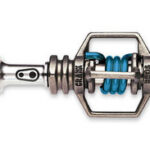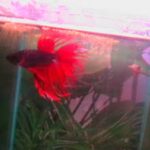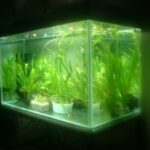Many of us who have been around the saltwater hobby long enough know that anemones are a diverse genus of animals that, quite frankly, we do not know very much about. These “flower animals” contain a flat pedal disk used for attachment, a distinct column often containing verrucae which serves as an adhesive in addition to the anemones foot and an oral disc with attachments of spirocysts, or stinging cells used mainly for food capture and protect against other predators, such as corals, fish and other types of anemones and a syphonoglyph and mouth opening (ciliated groove for water transport to gastrovascular cavity).
True anemones are solitary polyps much like that of Cynarina, or Lobophyllia stony corals for example. Think of a sock and you have a pretty simple representation of an anemone. Anemones consist of a hollow tube that is closed at one end where the foot resides(pedal disk) and flattens out to attach to the substrate or glass for stability. The top part of the anemone contains the oral disc which contains the hollow tentacles that house the spirocysts and nematocysts.
Anemones have three very distinct layers that make up their radially symmetrical body plan. The outer ectoderm, inner endoderm and a mesogloea which resides in between the two. The mesenteries are the meat of the anemone, containing filaments that look like spokes of a bicycle wheel and are responsible for providing large surface area for gas exchange, in collaboration with an important site for digestion of food and development of gametes.
These whitish filaments can be released by anemones through the mouth in the middle of the oral disc or column wall. This ability for anemones to release these acontia or mesenterial filaments is often times a direct result of some form of physical duress associated with temperature variances, water flow, salinity changes, or physical disturbances brought upon by such things as poor handling practices.
Defensive strategies employed by anemones can be initiated with finger-like structures called acrorhagi. These projections are located below the main tentacles of the oral disc and are packed with numerous nematocysts that are used in aggressive interaction with other anemones or corals. These nematocysts occur in two forms either haplonemes or heteronemes. Haplonemes consist of the same basic design throughout the distal tube and the armature with no deviation in size or shape. Heteronomes have a larger diameter distal tube in relation to the basal shaft and always have spines similar to a hypodermic needle.
Nematocyst discharge is produced in anemones by a structure called the ciliary cone complex. This specialized process is sensitive to both mechanical and chemical stimuli. Nematocytes consist of both microvilli and kinocillium responsible for mechanical and chemical reception respectively. Microvilli would be similar to the taste buds in our mouth whereas the kinocillium would be comparable to hair cells in the ear of vertebrates.
Cnidae are specialized organelles that are secreted in the anemones golgi apparatus and produced by cells called cnidocytes. These cnidae serve multiple purposes such as envenomation and food capture, defense and sometimes adhesive properties comparable to its verrucae. One other notable importance regarding an anemones cnidae is the fact that their are many different shapes and forms of cnidae(cnidome) so by studying these, taxonomic relationships and identification of specie or species can be accomplished, similar to the study and identification of octocorals given their sclerite makeup. The structural make-up of these cnidome consist of only three types and are each responsible for either holding prey, penetrating and/or capturing prey.
It is funny how many of us look at a reef and only depict it in terms of its colorful, diverse beauty with amazement and serenity. When, in fact, a reef is full of chemical warfare with corals and anemones constantly fighting one another to injure or kill its neighboring residents in efforts to be able to grow, reproduce, prosper establish dominance and live for another day.
Hopefully this article will enlighten you as you explore deeper into the fascinating world of the phylum cnidaria and the anemones or flower-animals that are an integral part of the anthozoa class. These anemones are truly a unique and diverse animal that are gorgeous, colorful, home to numerous fish and invertebrates and deadly just the same to would be predators, both fish and coral alike.




